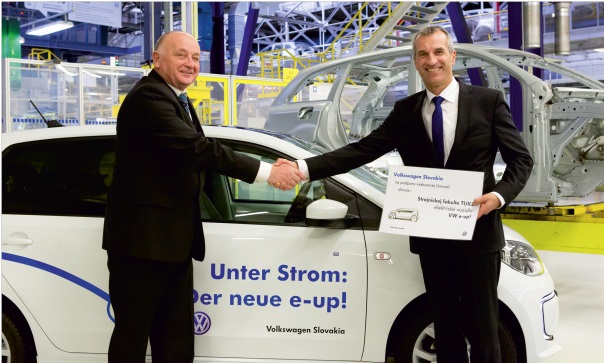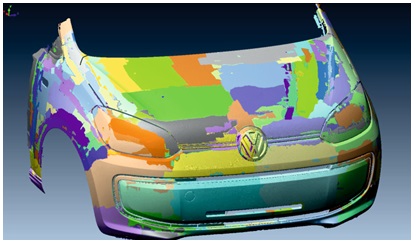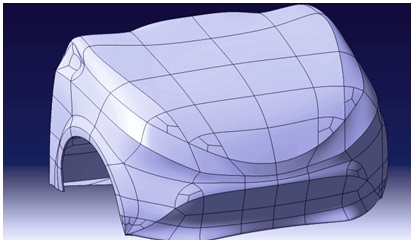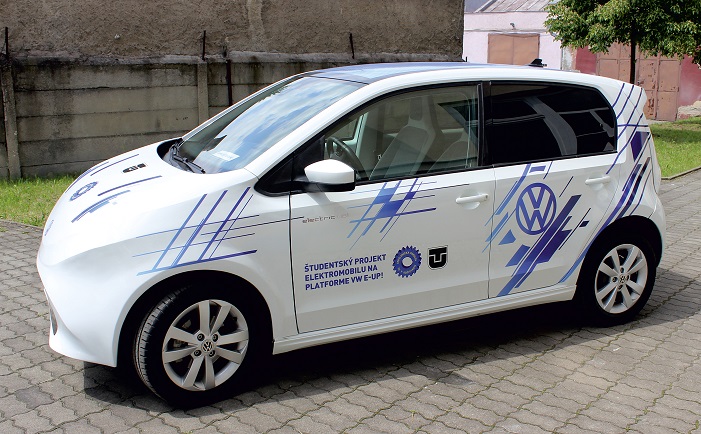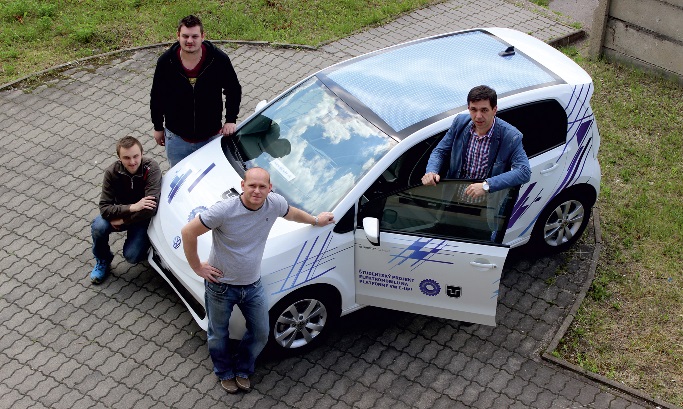|
A project to develop a prototype of a lightweight student electric car body based on the Volkswagen e-up!
One of the main priorities in the development of the prototype lightweight body of the Volkswagen e-up! provided by Volkswagen Slovakia a. s. to the Faculty of Mechanical Engineering of TU Košice as a gift (Fig. 1) is to increase the range on the road:
In parallel with the above objectives, the attractiveness of the design is also expected to increase in order to appeal to the younger generation.
The project is divided into several phases. In the first phase, reverse engineering technologies were used. 3D laser scanning (Fig. 2) and surface modelling technologies were applied, resulting in the digitalisation of the body of the VW-eUp! The obtained car body model was used both as a basis for aerodynamic analyses in the simulation software and as a "matrix" for determining the boundaries of the individual car parts (hood, front fenders, tailgate and bumper). In the first phase of the project, the objective is to validate the proposed concept of increasing the aerodynamic efficiency and reducing the weight of the selected components. The newly designed components are connected to existing parts of the car body, using the boundary lines of the individual body parts obtained by scanning.
Innovative designs of selected parts were created using CAD modelling. The design of the selected body parts was optimized with the support of CATIA and ANSYS - Fig. 3.
Rapid prototyping technologies were used for the production of the upgraded body components. A positive mould was milled by CNC machining, which became the basis for the production of new composite parts using vacuum forming technology.
The design change is also aimed at improving the aerodynamic properties of the car, as already mentioned. The sharp lines of the front of the car are designed for fast airflow around the body. They directly follow the side lines of the original model, which stabilise the flow of the circulating air. The special shape of the rear wing encloses the flow lines just behind the rear doors of the car. The braking effect of the rushing air hitting the front of the car has been eliminated by the closed profile of the bumper face with its connection to the bonnet and mudguards.
In the next phases of the project, the installation of photovoltaic panels and further reduction of the car's weight are being considered, both by replacing the original components with components made of progressive materials and by an overall redesign aimed at reducing aerodynamic drag.
The modular principle makes it possible to continue working on the redesign of the doors and interior elements.
|
obr. 1
obr. 2
obr. 3
obr. 4
obr. 5 |




